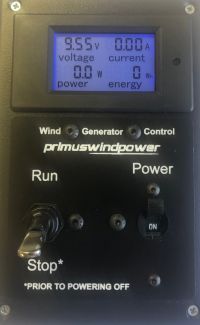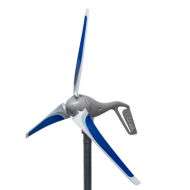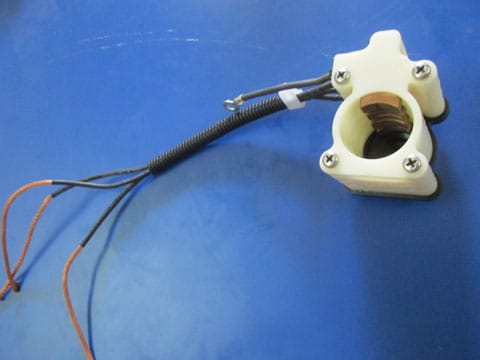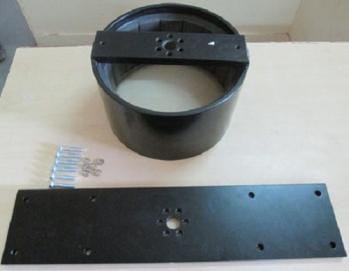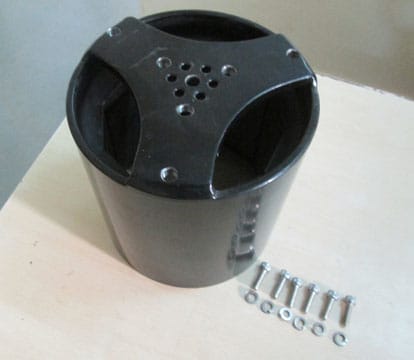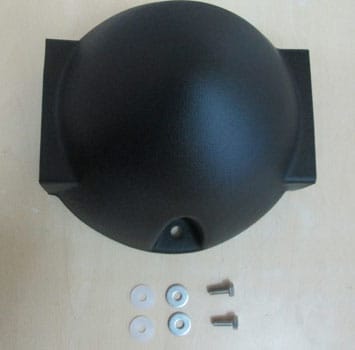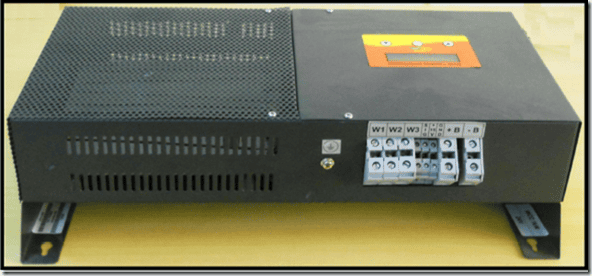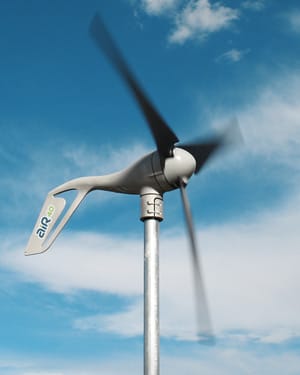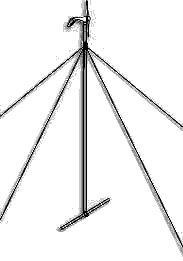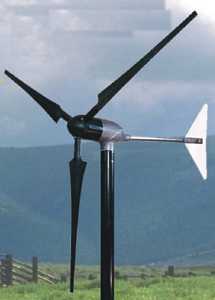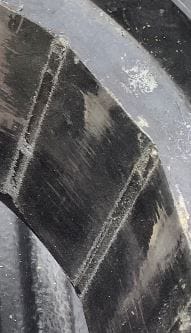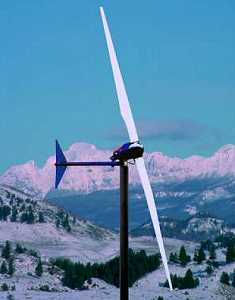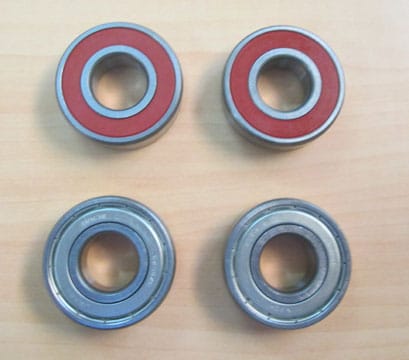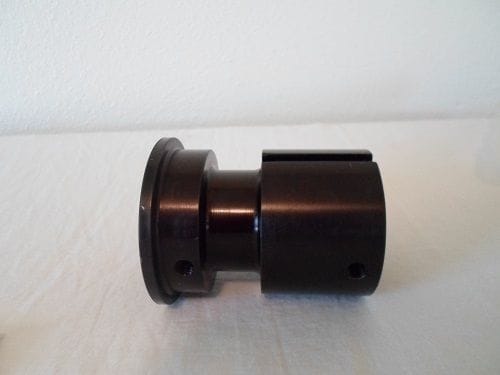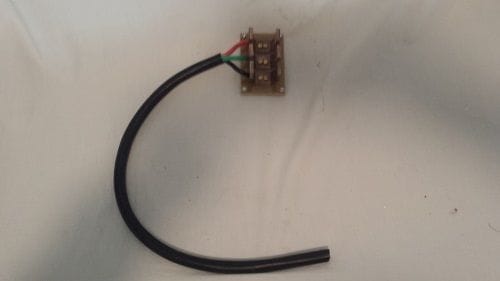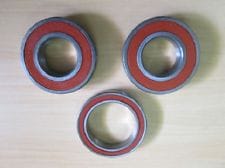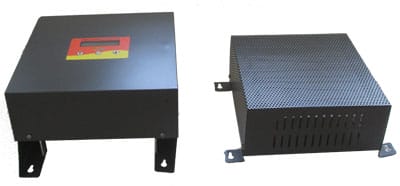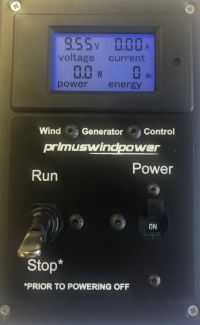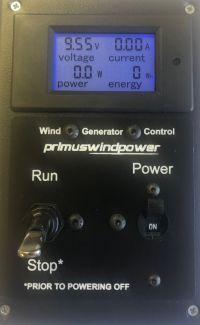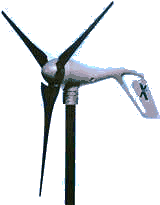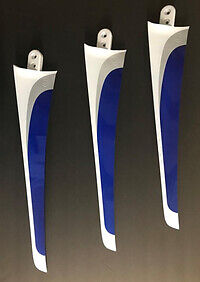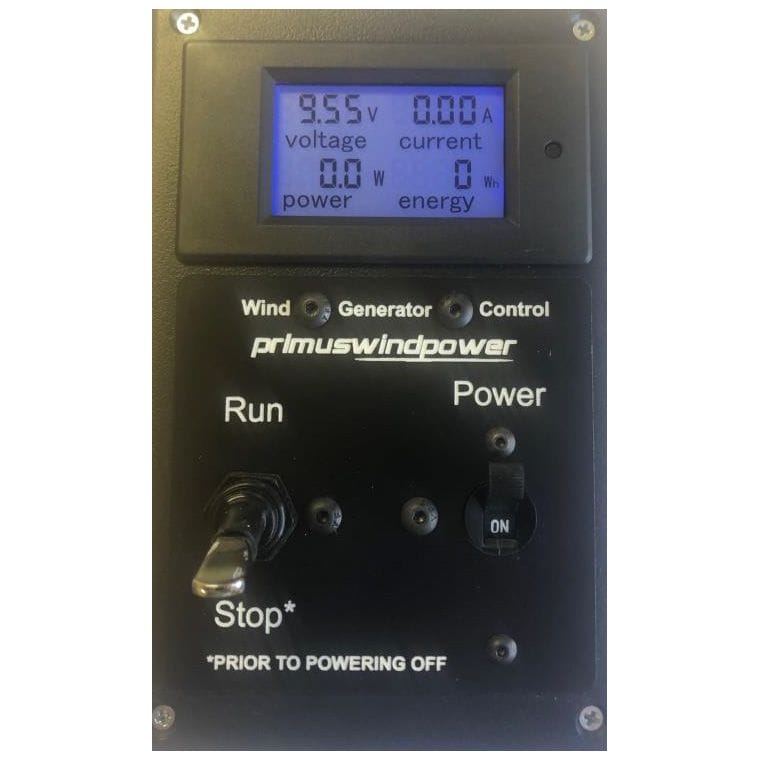Wind Turbines
Wind-powered battery-charge systems can be cost-effective if the average wind speed is nine miles per hour or more at the location of the wind generator. If you are using wind in combination with solar panels, it may be cost-effective if good wind is available only during part of the year. When the speed doubles, the power delivered is eight times as great.
Most wind turbine generators, whether using three or two blades, are designed to deliver maximum power at 30 mph. At 15 mph, they will deliver about 1/8 of their rated power. A wind turbine generator should be mounted at least 20 feet higher than any obstruction within 300 feet to avoid turbulence.
The power output of a wind generator will decrease roughly 3% for every 1000 feet of elevation. If you measure wind speed at ground level, you can expect about 1.5 times the speed 30 feet up, which equates to about three times the power.
At 120 feet above the ground, wind speeds will be twice what is measured at ground level. Power output will be more than twice the output at 30 feet and about 6 times the output at ground level.
Reliable Turbines for Lasting Performance
Wind is an enormously potent source of renewable energy. According to the U.S. Environmental Protection Agency, wind resources in the Rocky Mountain and Great Plains regions could potentially meet up to 25 percent of those states' power needs.
Better yet, wind turbines aren't just for farmers. A home wind energy system can be relatively unobtrusive. If you garden or farm, you can plant right up to the turbine's base. Selecting the right wind turbine generator for you will ensure that you have a long-lasting supply of sustainable and low-cost wind energy.
It is important when choosing a wind turbine to make sure that an accurate and certified power curve chart is available that will tell you the power output of the turbine on a windy day. A lot of the wind turbines on the market today are created by backyard businesses that do not have the certifications to back up their claims of power output. The Whisper wind turbines, formerly manufactured by Southwest Windpower and now produced by Wish Energy, are one of the exceptions.
Optimize Wind Power Installation Steps
The Solar Store founder has had a Whisper 200 wind turbine installed for 10+ years and knows how well these turbines work in terms of their reliability and performance.
- Check your local zoning codes to ensure you're allowed to install a wind turbine generator on your property. Be sure to get a full rundown on height restrictions. If your home is part of a subdivision, make sure you check with your homeowners association to avoid complaints from your neighbors.
- Conduct an energy audit of your house to determine how much energy you need to produce, as well as where your home may be wasting energy. Add up the watts you use for all your energy needs on a monthly basis. Also, look for air leaks in walls, doors and windows, and consider whether you're over-consuming energy by using brighter light bulbs, an old heating system or a higher thermostat setting than necessary, for instance.
- Consider how you might reduce your energy consumption by fixing air leaks and addressing other problems so you won't need to produce as much electricity. Reducing your consumption may allow you to install a less expensive and smaller wind energy system. Decide what percentage of your energy needs you'd like the tower to supply.
- Decide where you'll install your turbine and how it will be mounted. Avoid placing the turbine on your rooftop, as the vibrations from the turbines may cause noise as well as structural problems for the building and the turbine. Determine the typical wind direction at your location, and locate a spot upwind from buildings and trees to ensure maximum wind flow. Your turbine will also need to be at least 30 feet above any wind barriers sitting within 300 feet, according to the U. S. Department of Energy. These location specifics will help to determine the size of your turbine.
- Contact a nearby airport, weather station or university to learn the average wind speed in your area, then consider whether the wind may slow or speed up in your specific location. Keep in mind that speed increases with the height of the tower as well. Then follow the U. S. Department of Energy's formula to determine the performance of a wind turbine: AEO = 0.01328 x D^2 x V^3, where AEO is annual energy output in kilowatts per year, D is the rotor's diameter in feet, and V is the average wind speed in miles per hour. Complete this equation for several rotor sizes to determine which may work best, or if the wind turbine has a certified power curve, then this can be used.
- Shop smart. The Solar Store will happily calculate how each model would perform in your specific location, as this is a service that reputable dealers provide. As you look at models, also confirm the warranty and testimonials. Ensure that the models you consider are made for producing on-the-grid or off-the-grid energy, whichever you prefer. Also, make sure they come with all necessary component parts, such as controls for monitoring battery voltage, so they'll be ready to install and use.
Explore Our Wind Turbine Generator Selection
Our team's first-hand experience living off-grid with solar and wind power ensures that we understand your unique needs.
Discover the perfect wind turbine generator for your energy needs today. Our curated selection includes models suitable for various wind speeds and power requirements, ensuring you find the ideal solution for your location and energy goals.
If you have questions, contact us at info@thesolarstore.com, and we will gladly assist you every step of the way to energy independence.
Frequently Asked Questions
What size wind turbine generator do I need for my home?
The size depends on energy needs and local wind conditions. Conducting an energy audit and knowing your average wind speeds will help determine the appropriate size.
Can I use a wind turbine generator in a residential neighborhood?
Yes, but you must check local zoning laws and homeowners association rules to ensure you adhere to any restrictions regarding height, noise, or placement.
Do wind turbine generators work well in low wind conditions?
Some models are designed to work efficiently at low wind speeds, delivering power at around 8-12 mph. However, the power output increases when the wind blows at a high speed.

